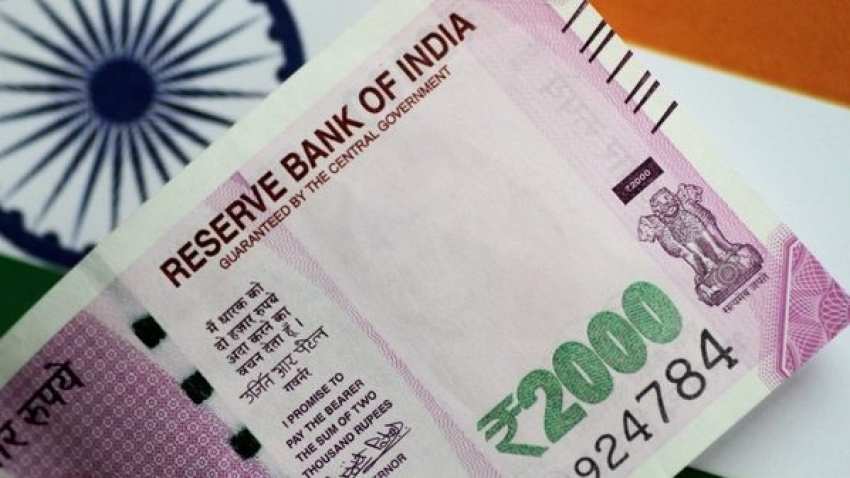10-year bond yield: India shows best performance; check key triggers for the macroeconomic rally in Indian economy
10-year bond yield: Government bond yields have fallen drastically over the past decade. The yield on the 10-year government bond is down almost 60 bps over the past month.

10-year bond yield: Government bond yields have fallen drastically over the past decade. The yield on the 10-year government bond is down almost 60 bps over the past month. This has been one of the best bond performances from across the world, even though directionally, there is continued bond optimism in most geographies. The sharp fall here also gives rise to the obvious question: have our yields fallen too much?
Speaking on the macroeconomic boom in the national economy Suyash Choudhary, Head – Fixed Income at IDFC AMC said, "No directional phase is one way consistently and one should expect some retracements from time to time. Indeed, the recent rally has been very sharp and it is possible that it gets followed up with a period of consolidation or retracement for some time. However, there is little to doubt that the bond environment remains constructive and hence notwithstanding some potential reversals or consolidations, there seems enough reason to continue to engage with the market."
See Zee Business video below:
Asked about the major triggers Choudhary summarized some of the key aspects of the bond market environment as below:
1] The global backdrop: In the US the first phase of the bond rally was when the market was leading the Fed. In other words, the market was signaling that the Fed may be making a mistake by not easing policy. This phase was marked by a substantial curve flattening. Now, with the Fed acknowledging ‘cross currents’ and weakness in inflation expectations, and almost explicitly signaling to ease, the phase of market-leading the Fed is over. With this, the flattening of the curve has also reversed. Thus the narrative with respect to the world remains one of expected monetary easing on the back of weaker growth and muted or falling inflation expectations. This is particularly true in geographies like the Eurozone where the growth – inflation mix is particularly weak.
2] Domestic growth drivers: India’s own manufacturing cycle is displaying similar strains as visible in a host of data points (auto, Purchasing Managers Index (PMI), Wholesale Price Index (WPI) prices, trade data) with an added drag from the ongoing financing squeeze, that has served to prematurely slow consumer leverage creation in an environment of already weak income growth. The Economic Survey lays out a growth model based on an investment revival where the capacity thus created will get filled by exports. However, this will involve significant market share gains given both cyclical and somewhat structural evolving limitations to world trade. In the meanwhile, growth will have to also find support from the countercyclical discretionary policy. With fiscal levers limited, monetary policy is the natural port of call.
3] A relatively prudent budget: The budget resisted any sort of counter-cyclical expansion, even when it was heavily prescribed by the private sector and the RBI governor himself didn’t seem very averse to it. Quite the contrary, it hiked some taxes (excise, custom, super-rich income tax) to make up for deficiencies in other taxes (GST, income tax). This obviously makes the role of monetary policy stronger for a continued countercyclical response. A final source of comfort is the evolving structure of inflation where the core is breaking lower. Indeed, market expectations are now between 50 to 100 bps residual of easing left in this cycle.
4] Demand versus supply: Bond yields demonstrated remarkable volatility over late 2017 to late 2018. This had significantly curbed the appetite of investment books in the market. Over the past year or so, the RBI has conducted Open Market Operation (OMO) purchases of around Rs 3,50,000 crores. This has had the effect of significantly reducing the size of banks’ investment books in an environment where liquidity has now turned positive as a conscious policy tool and there is some risk aversion developing in segments of lending. Bond performance has also turned significantly positive. All in all, and as deposit accretion hopefully improves on the back of improved liquidity, it is likely that banks net demand turns out to be much stronger than what has been seen in the past year.
Get Latest Business News, Stock Market Updates and Videos; Check your tax outgo through Income Tax Calculator and save money through our Personal Finance coverage. Check Business Breaking News Live on Zee Business Twitter and Facebook. Subscribe on YouTube.
RECOMMENDED STORIES

SBI 444-day FD vs PNB 400-day FD: Here's what general and senior citizens will get in maturity on Rs 3.5 lakh and 7 lakh investments in special FDs?

Power of Compounding: How long it will take to build Rs 5 crore corpus with Rs 5,000, Rs 10,000 and Rs 15,000 monthly investments?

Small SIP, Big Impact: Rs 1,111 monthly SIP for 40 years, Rs 11,111 for 20 years or Rs 22,222 for 10 years, which do you think works best?
02:46 PM IST










 Delaying an investment by even one day could result in lost interest that can’t be recouped: Bondbazaar's Founder Darak
Delaying an investment by even one day could result in lost interest that can’t be recouped: Bondbazaar's Founder Darak HDFC Life Insurance to raise Rs 1,000 crore via bonds
HDFC Life Insurance to raise Rs 1,000 crore via bonds SBI raises Rs 10,000 crore through infrastructure bonds
SBI raises Rs 10,000 crore through infrastructure bonds Banks may see pressure on other income & operating profit in Q1FY23 earnings, Zee Business explains
Banks may see pressure on other income & operating profit in Q1FY23 earnings, Zee Business explains SBI lists USD 650-mn green bonds on India INX, Luxembourg Stock Exchange
SBI lists USD 650-mn green bonds on India INX, Luxembourg Stock Exchange